The Ivory Islands
Earth in Upheaval Revisited – Part 3

Siberian Muck
Having delved into the muck deposits of Alaska in the opening section of Earth in Upheaval, Velikovsky turns his attention in the same chapter to Siberia and the islands of the East Siberian Sea. For centuries this sparsely populated region has been a major source of ivory. Although the mammoth has been extinct for millennia, the remains of as many as ten million of these creatures are believed to lie buried in the Siberian permafrost (Lister & Bahn 115). But it is not just the bones and tusks of these animals that have been preserved by the cold:
In 1797 the body of a mammoth, with flesh, skin, and hair, was found in northeastern Siberia, and since then bodies of other mammoths have been unearthed from the frozen ground in various parts of that region. The flesh had the appearance of freshly frozen beef; it was edible, and wolves and sledge dogs fed on it without harm. (Velikovsky 1977:4, Digby 9)
Velikovsky’s source for this information, the natural historian Bassett Digby, attributed these observations to a certain D. F. Hertz, but this is a mistake for O. F. Herz.
In 1901, the German entomologist Alfred Otto Herz led an expedition to Siberia to recover the carcass of a mammoth—the famous Berezovka mammoth, which is now on display in the Zoological Museum in St Petersburg. In Russia, Herz was known by his Russian patronymic and German surname: Otto Ferdinandovich Herz. On 27 February 1902, he presented a report of the Berezovka expedition to the Physico-Mathematical Department of the Academy. It was from this report—or an English translation of it—that Digby was quoting:
The flesh from under the humerus, sinewy and marbled with fat, is dark red and looks as fresh as well-frozen meat. For some time we wondered whether or not we should try tasting it, so appetizing did it look, but no one could bring himself to place such food in his mouth—horsemeat was preferred. The dogs, however, gladly ate the mammoth meat that was thrown to them. (Herz 26, my translation)
Eugen Wilhelm Pfizenmayer, the expedition’s taxidermist, has also left an account of this expedition and a similar one which took place six years later: Siberian Man and Mammoth (1926, English translation 1939). Both expeditions were carried out on behalf of the St Petersburg Academy of Sciences.
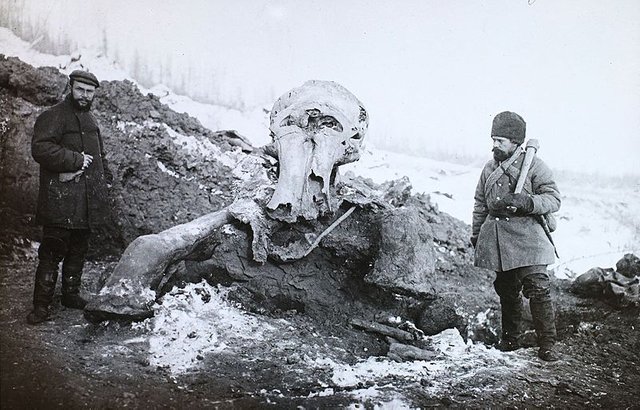
The first intact mammoth carcass to be recovered from Siberia was the Adams mammoth, which was discovered in 1799—not 1797—by a local hunter and later recovered by the Russian botanist Mikhail Ivanovich Adams. Adams also noted that the flesh was still edible:
... the Jakouts of the neighbourhood tore off the flesh, with which they fed their dogs. Ferocious animals—white bears of the north pole, gluttons, wolves, and foxes—preyed upon it also, and their burrows were seen in the neighbourhood. The skeleton, almost completely unfleshed, was entire, with the exception of one of the fore feet. (Adams 128-129).
In citing Bassett Digby’s The Mammoth and Mammoth-Hunting in North-East Siberia, Velikovsky is recycling a passage from Worlds in Collision, where he also discussed the extinction of the Siberian mammoth and other megafauna (note that the correct date, 1799, is given):

Northeast Siberia, which was not covered by ice in the Ice Age, conceals another enigma. The climate there has apparently changed drastically since the end of the Ice Age, and the yearly temperature has dropped many degrees below its previous level. Animals once lived in this region that do not live there now, and plants grew there that are unable to grow there now. The change must have occurred quite suddenly. The cause of this Klimasturz has not been explained. In this catastrophic change of climate and under mysterious circumstances, all the mammoths of Siberia perished.
The mammoth belonged to the family of elephants. Its tusks were sometimes as much as ten feet [3 m] long. Its teeth were highly developed and their “density” was greater than in any other stage in the evolution of the elephants; apparently they did not succumb in the struggle for survival as an unfit product of evolution. The extinction of the mammoth is thought to have coincided with the end of the last glacial period.
Tusks of mammoths have been found in large numbers in northeast Siberia; this well-preserved ivory has been an object of export to China and Europe ever since the Russian conquest of Siberia and was exploited in even earlier times. In modern times the ivory market of the world still found its main source of supply in the tundras of northeast Siberia.
In 1799 the frozen bodies of mammoths were found in these tundras. The corpses were well preserved, and the sledge dogs ate the flesh unharmed. “The flesh is fibrous and marbled with fat” and “looks as fresh as well frozen beef.” (Velikovsky 2009:44, Digby 9)

Christian Scientists
Velikovsky’s next source, the Reverend D Gath Whitley, was a Protestant clergyman who believed that modern science was an aid not a hindrance to his Christian faith. Far from being a fundamentalist who accepted the literal word of the Bible, Whitley used science to interpret the Bible. Writing of the frozen carcasses of Siberian mammoths, he drew the obvious conclusion:
These carcases are, when discovered, quite perfect, and have been preserved in this condition, by the perpetually frozen soil in which they are buried. It is therefore absolutely necessary to believe that the bodies were frozen up immediately after the animals died, and were never once thawed, until the day of their discovery. No other theory will explain the perfect preservation of the bodies of these great elephants. (Whitley 35)
Incidentally, it was possibly while reading this paper that Velikovsky first came across the reference to Nils Adolf Erik Nordenskiöld with which he opens this section:
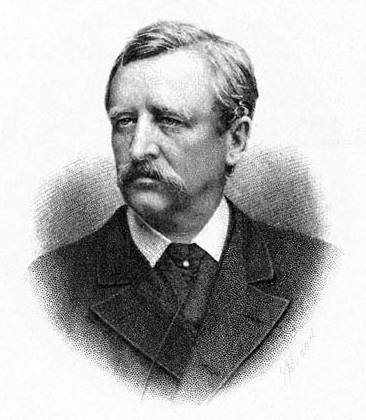
What adds to its loneliness also, is the fact that even in summer nearly the whole extent of its coast is uninhabited by human beings. Nordenskiöld says that, in his voyage along the northern coast of Siberia in the Vega during the summer of 1878, he did not see a single human being on the shore, in the whole stretch from Yug or Schar (at the westernmost point of Siberia) to Cape Chelagskoi. (Whitley 36)
Whitley’s paper, The Ivory Islands in the Arctic Ocean, was read to the Philosophical Society of Great Britain on 7 December 1909. This society was founded in the wake of the publication of Charles Darwin’s On the Origin of Species. Like Whitley, many of the members of this society were not inimical to science, but laboured to show how the latest scientific discoveries were not inconsistent with Holy Scripture. Several of its members were prominent scientists. Most notable among these was, perhaps, George Stokes, who was president of the society’s Victoria Institute from 1886 until his death in 1903.
In his paper, Whitley pointed out that the remains of the mammoth and other species of megafauna were to be found all over Siberia. The abundance of these remains increased the further north one travelled, with the greatest abundance occurring in the vicinity of the New Siberian Islands in the Arctic Ocean:
... the soil of these desolate islands is absolutely packed full of the bones of elephants and rhinoceroses in such astonishing numbers, that no places in the whole world contain such quantities of elephants’ remains as do these icy islands in the Arctic Sea. (Whitley 36)
And these bones and tusks were not only found on dry land:
it is equally wonderful that the bed of the sea around the New Siberian Islands, seems to be covered with the tusks and teeth of elephants, which are being constantly washed up by the waves on the sandbanks round the shores of these islands. Nordenskiöld says that the making of new collections of mammoths’ tusks year by year in Liakoff’s Island, depends on their being washed out of the sandbanks, so that after an east wind, which has lasted some time, they may be collected at low water on the sandbanks, then laid dry. He also tells us, that when the Vega was sailing past Liakoff’s Island, the trawl-net brought up from the bottom some fragments of mammoths’ tusks, which confirmed the statements of the ivory hunters, and showed that there must be immense deposits of elephants’ bones, under the sea, at this place. (Whitley 51-52)
Whitley’s final summation was appropriately catastrophist:
... formerly, and speaking geologically in recent times, the regions north of Siberia enjoyed a milder climate than they possess now ... At that time a great tract of country must have extended from the mouth of the Lena to the New Siberian Islands, and it stood at a considerable level above the sea, while the islands which now exist in the ocean in that region formed upland districts and mountain ranges. This ancient land was covered with forests, and was traversed by the great Siberian rivers. Vast herds of elephants, rhinoceroses, musk-oxen, and buffaloes roamed over the grassy plains and wandered amidst the forests, and for long they enjoyed a peaceful and secure home. A great catastrophe at last overtook them. The land in the extreme north of Siberia, sank beneath the waters of the Polar Sea. As the waters rose higher and higher, the animals crowded to the uplands for safety, and congregated in enormous numbers on the mountain tops. The land, however, continued to sink, and the waters rose higher and higher. The tops of the highest hills were at last submerged, and the destruction was complete. After a time the land began to rise slowly, and the New Siberian and Liakoff islands, which had formed mountains in the land, rose above the waters. As they had formed a last refuge of the animals when the land was submerged, they were naturally covered with the bones, teeth, and tusks of the animals which had been drowned upon them. Currents also, in the waters, swept the bones into various places, accumulating them here and there in large deposits. The climate also at this time underwent a great change, and altered from one of a mild and genial character to one of intense cold and Arctic severity. (Whitley 55-56)
Did the land sink gradually and subsequently rebound, as Whitley surmised? Or was it a sudden irruption of the sea that wiped out the Siberian megafauna?
Gradual or Sudden Extinction?
The French naturalist Georges Cuvier is often considered the father of catastrophism. He was a favourite author of Velikovsky and was frequently quoted by him. In Worlds in Collision Velikovsky cited his Théorie de la terre (Essay on the Theory of the Earth) of 1821 as evidence of the sudden extinction of the megafauna:

It is of much importance to remark, that these repeated irruptions and retreats of the sea have neither all been slow nor gradual; on the contrary, most of the catastrophes which have occasioned them have been sudden; and this is especially easy to be proved, with regard to the last of these catastrophes, that which, by a two-fold motion, has inundated, and afterwards laid dry, our present continents, or at least a part of the land which forms them at the present day. In the northern regions, it has left the carcases of large quadrupeds which became enveloped in the ice, and have thus been preserved even to our own times, with their skin, their hair, and their flesh. If they had not been frozen as soon as killed, they would have been decomposed by putrefaction. And, on the other hand, this eternal frost could not previously have occupied the places in which they have been seized by it, for they could not have lived in such a temperature. It was, therefore, at one and the same moment that these animals were destroyed, and the country which they inhabited became covered with ice. This event has been sudden, instantaneous, without any gradation; and what is so clearly demonstrated with respect to this last catastrophe, is not less so with reference to those which have preceded it. (Cuvier 1827:14-15)
In Earth in Upheaval Velikovsky cites another of Cuvier’s works, A Discourse on the Revolutions of the Surface of the Globe and the Changes thereby Produced in the Animal Kingdom of 1822, but the relevant passage (Cuvier 1831:10-11) is just a restatement of this passage from the Essay on the Theory of the Earth. This will not be the last time in Earth in Upheaval that Velikovsky calls Cuvier to the witness stand.
Appended to Whitley’s paper on the Ivory Islands were some additional comments by two other members of the Victoria Institute: Henry Howorth, author of The Mammoth and the Flood, and geologist Edward Hull. It was from the former of these that Velikovsky took his assertion that even the eyeballs of some mammoths were preserved from putrefaction (Whitley 56). Howorth was also the source for the claim that Charles Darwin was troubled by the extinction of the mammoth, considering the problem insoluble (Whitley 56). Finally, Velikovsky quotes Howorth to drive home the point that many mammoths whose remains have been unearthed in Siberia must have perished suddenly:

[Henry Howorth] further stated that the contents of the stomachs have been carefully examined; they showed the undigested food, leaves of trees now found in Southern Siberia, but a long way from the existing deposits of ivory. Microscopic examination of the skin showed red blood corpuscles, which was a proof not only of a sudden death, but that the death was due to suffocation either by gases or water, evidently the latter in this case. But the puzzle remained to account for the sudden freezing up of this large mass of flesh so as to preserve it for future ages. (Whitley 56)
Howorth was a barrister and a politician by profession and only studied geology and archaeology from an amateur’s perspective, so it is not surprising to find Velikovsky calling upon two experts in the field to confirm these conclusions: George Frederick Kunz was a world-renowned mineralogist and a research curator at the American Museum of Natural History in New York : James Dwight Dana was a graduate of Yale and the foremost American geologist of the 19th century (Natland 20).
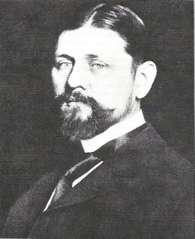
Kunz’s Ivory and the Elephant (1916) is as complete a history of ivory as one could wish for, with chapters on the evolution of the elephant and the development of the ivory trade. Whitley’s paper is cited on page 236, the very page Velikovsky references. Kunz summarized Whitley’s theory that the extinction of the mammoth was caused by the gradual sinking of the land:
However, we are usually taught to regard geological changes as extremely gradual, so gradual that the adjustment of living organisms to the changing conditions is greatly favoured. Here, however, many of the observed facts would rather seem to point to some sudden and unexpected cataclysm. (Kunz 237)
Kunz then proceeded to repeat Howorth’s comments on Darwin and the undigested contents of mammoth stomachs.
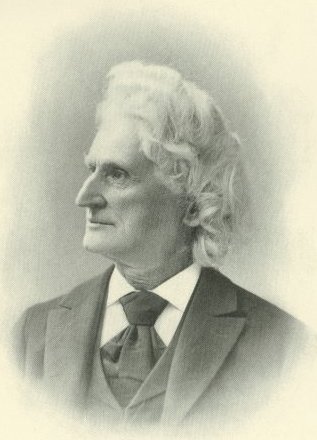
J D Dana’s Manual of Geology, which Velikovsky cites, was first published in 1863. It proved so successful that it went through four editions in the author’s lifetime and is still in print today. His Manual of Mineralogy, which has been continually updated since his death, is still in use as a standard textbook. Like Whitley, Dana believed it was possible to reconcile Western science with Biblical scripture. Among his late works one might mention Creation, Or, The Biblical Cosmogony in the Light of Modern Science (1885), which he wrote in response to the publication of a similarly titled work by his Swiss colleague Arnold Henry Guyot.
Petrified Forests
The ivory islands of the East Siberian Sea held another surprise for the early Polar explorers: petrified forests. Today, this term is used to describe wood that has undergone permineralization and turned to stone, whereas the Arctic wood is still wood. The correct term for this is mummified wood:
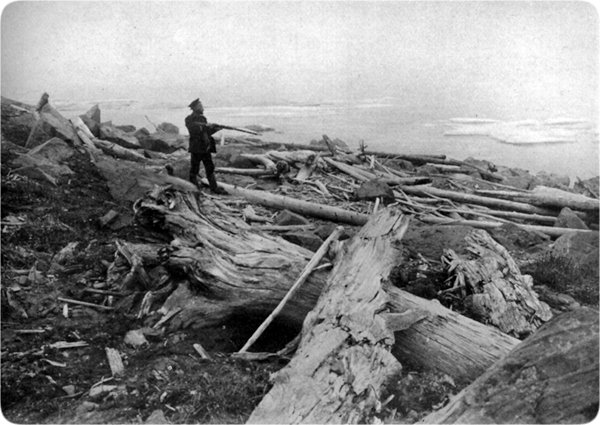
On the southern coast of New-Siberia, he [Hedenström] says, are found the remarkable Wood Hills. They are 30 fathoms [55 m] high, and consist of horizontal strata of sandstone, alternating with strata of bituminous beams or trunks of trees. On ascending these hills, fossilized charcoal is everywhere met with, covered apparently with ashes; but, on closer examination, this ash is also found to be a petrifaction, and so hard that it can scarcely be scraped off with a knife. On the summit another curiosity is found, namely, a long row of beams resembling the former, but fixed perpendicularly in the sandstone. The ends, which project from seven to ten inches [20-30 cm], are for the most part broken. The whole has the appearance of a ruinous dike. (Wrangell 173, fn)

Here Velikovsky is quoting from Ferdinand von Wrangell’s Narrative of an Expedition to Siberia and the Polar Sea. The same passage was also quoted in Whitley’s paper, which was Velikovsky’s immediate source, but Velikovsky cites a different edition of Wrangell’s book—the abridged American edition of 1841. Wrangell’s Russian was translated into German by Georg von Engelhardt, and it was this German edition that Elizabeth Sabine translated into English. Her husband, Edward, who was himself a seasoned Polar explorer, edited the text.

Georg Adolf Erman was a German physicist who circumnavigated the globe in 1828-30. Travels in Siberia (1848) is an English translation taken from Erman’s Reise um die Erde [Travels Round the Earth]. Velikovsky quotes Erman’s account of Hedenström’s Wood Hills, but once again his immediate source is Whitley. This is proved by the fact that Velikovsky cites the first of Whitley’s page references (376, 383) instead of the second (379-380), which is the correct one.
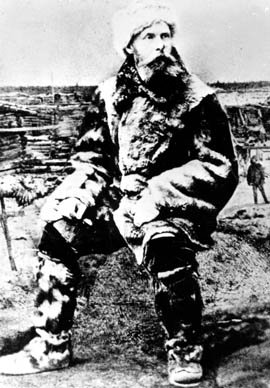
Continuing to mine Whitley’s paper for sources, Velikovsky next cites Eduard von Toll, a Russian geologist, who lost his life in 1902 during the last of several Arctic expeditions. Whitley’s source was a pair of anonymous notices in the Journal of the Royal Geographical Society. The first of these appeared in September 1887 and very briefly described the Russian expedition to the New Siberian Islands of 1885-86, which was led by Alexander Bunge. The second notice appeared in May 1894 and briefly described Baron Toll’s expedition to the same region in 1892-93. On this expedition, Toll claimed to have found traces of glaciation near Anabar Bay, something which had not been hitherto discovered in Northern Siberia.
Whitley concluded that the New Siberian Islands were densely forested in the days of the megafauna, but this is not at all certain. It could be claimed, as Velikovsky himself muses, that these buried forests grew to maturity further south before being uprooted by some cataclysm—or a series of cataclysms—and transported to the Arctic. Each hypothesis, however, is equally troubling for the uniformitarian.
Siberian Muck and Alaskan Muck
Velikovsky concludes this opening chapter of Earth in Upheaval by suggesting that the mammaliferous deposits of Alaska and Siberia share a common cause, one which has not been recognized by the academic world because the latter were discovered and described by the Polar explorers of the 18th and 19th centuries, while the former were recorded by professional scientists of the 20th century.
Those who argue that the quantity of bones and carcasses recovered from the Alaskan muck deposits were greatly exaggerated by Froelich Rainey and Frank Hibben—Velikovsky’s two principal sources for this information—have their work cut out for them if they wish to dismiss the Siberian remains with a similar argument. The abundance of the Siberian mammoth remains is proved by the successful economic exploitation of these deposits since at least the 17th century. It is even possible that this trade goes back to the 1st century. Velikovsky mentions Pliny the Elder in this regard, though he does not cite him:

These animals [elephants] are well aware that the only spoil that we are anxious to procure of them is the part which forms their weapon of defence, by Juba, called their horns, but by Herodotus, a much older writer, as well as by general usage and more appropriately, their teeth. Hence it is that, when their tusks have fallen off, either by accident or from old age, they bury them in the earth ... Theophrastus and Mucianus are of opinion that there are certain stones which bring forth other stones. Theophrastus states, also, that a fossil ivory is found, both white and black; that the earth, too, produces bones, and that osseous stones are sometimes found. (Pliny 3:4 ... 36:29)
Today, global warming and an embargo on the sale of elephant ivory have given the trade in Siberian ivory a shot in the arm. This is a well that is not going to run dry anytime soon.
Bringing Velikovsky up to Date
Velikovsky’s principal sources for the information in this section of Earth in Upheaval were Christian scientists. To men like Whitley, Cuvier and Dana, Western science illuminated their Christian faith and assisted them in their understanding of Holy scripture. This perception of the relationship between science and religion is very different from that of the post-Darwinian scientist. The latter is either an out-and-out atheist, for whom religion is irrelevant and anachronistic, or a theist, for whom the Bible is not the infallible word of God but a written document to be analysed and critiqued like any other.
So, have these accounts of ivory islands, petrified forests and mammaliferous deposits stood the test of time? Or does modern science dispute the findings of the old explorers?
During the Soviet era, the leading authority on the mammoth was undoubtedly Nikolai Kuzmich Vereshchagin (1908-2008). A graduate of the Leningrad Zoological Institute, Vereshchagin spent the last thirty-eight years of his long life studying the paleofauna of the Arctic, with a particular interest in the mammoth. He was a chairman of the Mammoth Research Committee at the Academy of Sciences of the USSR. He was the author or co-author of more than 500 published papers.
Vereshchagin never disputed the abundance of mammoth remains in Siberian deposits. One of his papers was actually titled The Mammoth “Cemeteries” of North-East Siberia:

The north of Yakutia has long been known to be an immense storehouse of frozen disjointed bones of many hundreds of thousands of large Pleistocene mammals—mammoths, horses, woolly rhinoceroses, bison, musk-oxen ... Such knowledge had a commercial value ... for the quarrying of mammoth ivory has gone on for many centuries. In quality these tusks, which have lain in frozen ground for tens of millennia, are as good as those of modern African and Indian elephants and are sometimes two or three times larger. For naturalists, the greatest interest lies in the discovery of whole frozen bodies or of skulls and complete skeletons. (Vereshchagin 1974:3)
But Vereshchagin was no catastrophist. He adopted the conventional view that the Siberian deposits in which mammoth remains have been found are windborne loessic silts, just like the Alaskan muck deposits (Vereshchagin & Baryshnikov 1984:490). On the question of the extinction of the megafauna, however, he acknowledged the lack of consensus:
Whenever Pleistocene extinctions are considered, mammoths always receive the most attention. For almost two centuries now, when solid facts and ecological and taphonomic observations were lacking, scholastic discussions or fantastic musings have dominated logical deductions. From the time of Peter the Great and the first printed articles about the mammoth by the state councilor and scholar Tatishchev (Tatishchev and Gmelin 1730), it became popular to think that the mammoth lived in a warmer climate, similar to the African and Asiatic elephants, and that it perished when the climate got colder. This idea has survived right to the present among both scholars and laymen. (Vereshchagin & Baryshnikov 490)
Among a brief but comprehensive review of the various hypotheses that have been proposed to account for the extinction of the mammoth—from Howorth’s catastrophic Deluge to Palaeolithic hunters—we learn what Vereshchagin’s own opinion was:
The zoologist Vereshchagin (1971b, 1979) believed that the mammoth became extinct primarily as a result of the radical reconstitution of climates and landscapes in northern Eurasia at the end of the glacial epoch. (Vereshchagin & Baryshnikov 492)
Radical reconstitution of climates and landscapes. Well, that’s pretty clear!
The main difficulty in attributing the extinction of the megafauna to climate change is that the Siberian climate is alleged to have ameliorated—not deteriorated—at the end of the glacial epoch. Survival ought to have become easier for the mammoth and its contemporaries. Scholars like Vereshchagin and Tomirdiaro are compelled to contrive models in which improving conditions were disastrous for the megafauna:
In the opinion of the paleogeographer and frozen-ground specialist Tomirdiaro (1977), the extinction of the mammoth and of the mammoth fauna in northeast Siberia came about at the end of the [Würm (Valdaj)], when an “ecological catastrophe,” linked to climatic amelioration, led to the thawing of the Arctic basin and the melting of ground ice. The fodder-rich tundra-steppe was transformed into a moist, boggy, mossy tundra. There would be no place for mammoths in the present arctic tundra of Eurasia with its dense snow driven by the winds. (Vereshchagin & Baryshnikov 492)
Vereshchagin had asked the same question three years before Tomirdiaro and had come to the same conclusion:
Would even a partial restoration of such previously abundant life be possible [in north-east Siberia] today? ... Neither mammoth nor bison could exist in the sort of tundra that exists there today. (Vereshchagin 1974:3 ... 12)
Arctic Forests
What about the buried forests of the New Siberian Islands? Today, the tree line in north-eastern Siberia does not even reach the Arctic coast, let alone the offshore islands:
The current northern treeline zone in Eurasia runs roughly parallel to the Arctic coast for over 5500 km from Fennoscandia through eastern Siberia ... The treeline lies generally between 60° and 70° N latitude and extends northward to 73° N in the Taimyr Peninsula region of central Siberia, a location that represents the world’s northernmost extension of the boreal forest. (MacDonald et al 2286)
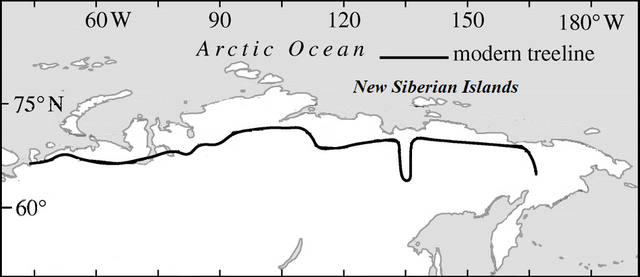
MacDonald et al also note the dominant trees at or near the tree line:
In northern Asia, the dominant conifers at or near the treeline include larches (L. sibirica and Larix dahurica Turcz. ex Trautv.), Pinus sibirica Du Tour (Siberian pine) and Pinus pumila (Pall.) Regel (stone pine). Broadleaf trees such as Betula (birch) and Populus (poplar) can also be found in the Eurasian treeline zone. (MacDonald et al 2286)
The authors of this 2008 paper concede that trees were found north of the current tree line not only during the post-glacial Holocene but also during the Late Pleistocene:
The northern tundra zone of continental Eurasia contains an important fossil archive related to the past distribution of tree species during the Late Pleistocene and Holocene. From Fennoscandia to eastern Siberia, hundreds of wood macro- and megafossils of Pinus, Picea, Larix and Betula trees have been found in locations north of the modern range limits of these genera ... In northern Russia such samples, including bark, cones, needles and large logs, have been discovered on the tundra surface and in peats, alluvial deposits, colluvial deposits and lake sediments ... (MacDonald et al 2294)
In another paper, Vegetation and Climate of the New Siberian Islands for the past 15,000 Years, Makeyev et al attempt to reconstruct the botanical sequence of these islands since 13,400 BCE. On Kotelny Island, the largest of the New Siberian Islands, they identified seven major stages of evolution:
The first period (Sartan, 15,400–12,500 BP) is characterized by conditions of a sharp continental climate and the xerophyte herb vegetation, and the development of so-called tundra-steppe landscapes, populated by the mammals of the late Pleistocene (mammoth) fauna complex. (Makeyev et al 57)
During this period, arboreal pollen—from trees—accounted for 18% of the total.
The second period (late glacial) (12,500–12,200 BP) is characterized by increased humidity and moderated continental characteristics. Winter air temperatures were warmer than previously ... During this time ... the landscapes of Kotelny were dominated by underbrush tundras (Betula exilis, _B. cf. tortuosa), alder (Alnus fruticosa) and willow (Salix spp.). (Makeyev et al 57-58)
During this period, arboreal pollen accounted for 45% of the total.
The third period (12,200–10,000 BP) follows after this short-term warming and rise of humidity. A strong continental trend affects the climate of that time, resulting in the almost complete disappearance of shrub and dwarf-shrub vegetation and the flourishing of xerophyte plants ... The mammals of the mammoth complex still populated the islands, but numbers of them as well as a number of species probably became considerably reduced. (Makeyev et al 58)
During this period, arboreal pollen accounted for 20% of the total.
This paper can hardly be said to support the catastrophist view of things, but it does at least confirm that trees grew within the margins of the Arctic Ocean during periods when the climate was supposedly colder than it is today. The species of trees, however, are quite small—dwarf birch only grow to heights of a few metres—so the possibility remains that the large specimens of trees buried in the Arctic grew somewhere else and were carried to the Arctic by flood waters, whether regional or global.
Neither of these papers explains how or why the tree line migrated so far south of the New Siberian Islands to its present latitude.
Questions
If megafauna could not survive in Siberia today, how could they possibly have thrived there during the late glacial period? If trees cannot grow in north-east Siberia today north of latitude 70°, how could forests have flourished in the Arctic Ocean during the Ice Age? These are just two of the circles that must be squared if we are to make sense of this enigma. The evidence that many of the megafauna were killed suddenly and without forewarning is another.
Perhaps the most intriguing thing about the extinction of the mammoth and other species of megafauna at the end of the Ice Age is that it is still a matter of scholarly debate, with no consensus being reached after more than two hundred years.
I will return to these questions in a future article and try to unravel some of their conundrums. It is impossible to do justice to this subject here, at the tail end of an article that is already overlong.
References
- Anonymous, The Russian Expedition to the New Siberian Islands, Proceedings of the Royal Geographical Society and Monthly Record of Geography, Volume 9, Number 9 (September 1887), pp 577-578, The Royal Geographical Society (with the Institute of British Geographers), London (1887)
- Anonymous, Baron Toll’s Expedition to Arctic Siberia and the New Siberia Islands, The Geographical Journal, Volume 3, Number 5 (May 1894), pp 409-413, The Royal Geographical Society, London (1894)
- Michael Adams, Some Account of a Journey to the Frozen-Sea, and of the Discovery of the Remains of a Mammoth, The Philadelphia Medical and Physical Journal, Part 1, Volume 3, C & A Conrad & Co, Philadelphia (1808)
- Georges Cuvier, Discours sur les révolutions de la surface du globe et sur les changemens qu’elles ont produits dans la règne animal, H Cousin, Paris (1821, 1840)
- Georges Cuvier, A Discourse on the Revolutions of the Surface of the Globe and the Changes thereby Produced in the Animal Kingdom, Carey & Lea, Philadelphia (1822, 1831)
- Georges Cuvier, Robert Kerr (translator), Essay on the Theory of the Earth, William Blackwood, Edinburgh (1827)
- James D Dana, Creation, Or, The Biblical Cosmogony in the Light of Modern Science, The Bibliotheca Sacra, Volume 42, pp 201-224, E J Goodrich, Oberlin OH (1885)
- James D Dana, Manual of Geology: Treating of the Principles of the Science with Special Reference to American Geological History, for the Use of Colleges, Academies, and Schools of Science, Fourth Edition, American Book Company, New York (1895)
- Georg Adolf Erman, W D Cooley (translator), Travels in Siberia, Volume 2, Longman, Brown, Green, and Longmans, London (1848)
- Arnold Guyot, Creation, Or, The Biblical Cosmogony in the Light of Modern Science, Charles Scribner’s Sons, New York (1884)
- Otto F Herz, Berichte Des Leiters Der Von Der Kaiserlichen Akademie Der Wissenschaften Zur Ausgrabung Eines Mammuthkadavers An Die Kolyma-Beresowka Ausgesandten Expedition [Report of the Leader of the Expedition of the Imperial Academy of Sciences to the Kolyma-Beryozovka River to Excavate a Mammoth Carcass], St Petersburg (1902)
- Henry H Howorth, The Mammoth and the Flood: An Attempt to Confront the Theory of Uniformity with the Facts of Recent Geology, Sampson Low, Marston, Searle & Rivington, London (1887)
- George Frederick Kunz, Ivory and the Elephant in Art, in Archaeology, and in Science, Doubleday, Page and Company, Garden City NY (1916)
- Adrian Lister, Paul G Bahn, Mammoths, Macmillan General Reference, New York (1994)
- G M MacDonald, K V Kremenetski, D W Beilman, Climate Change and the Northern Russian Treeline Zone, Philosophical Transactions of the Royal Society B: Biological Sciences, Volume 363, Number 1501 (12 July 2008), pp 2285–2299, The Royal Society Publishing, London (2008)
- V M Makeyev, D P Ponomareva, V V Pitulko, G M Chernova and D V Solovyeva, Vegetation and Climate of the New Siberian Islands for the past 15,000 Years, Arctic, Antarctic, and Alpine Research, Volume 35, Number 1 (February 2003), pp 56-66, INSTAAR, University of Colorado, Boulder CO (2003)
- James H. Natland, Rock Stars: James Dwight Dana (1813-1895): Mineralogist, Zoologist, Geologist, Explorer, GSA Today, Volume 13, Number 2 (February 2003), The Geological Society of America, Boulder CO (2003)
- Eugen Wilhelm Pfizenmayer, Mammutleichen und Urwaldmenschen in Nordost-Siberien, F A Brockhaus-Verlag, Leipzig (1926)
- Eugen Wilhelm Pfizenmayer, Muriel D Simpson (translator), Siberian Man and Mammoth, Blackie & Son Ltd, London (1939)
- Pliny the Elder, John Bostock (translator), H T Riley (translator), The Natural History of Pliny, Volume 2, Volume 6, Henry G Bohn, London (1857)
- Immanuel Velikovsky, Worlds in Collision, Paradigma Ltd (1950, 2009)
- Immanuel Velikovsky, Earth in Upheaval, Pocket Books, Simon & Schuster, New York (1955, 1977)
- N K Vereshchagin, The Mammoth “Cemeteries” of North-East Siberia, Polar Record, Volume 17, Issue 106 (January 1974), pp 3-12, Cambridge University Press, Cambridge (1974)
- N K Vereshchagin and G F Baryshnikov, Quaternary Mammalian Extinctions in Northern Eurasia, in Quaternary Extinctions: A Prehistoric Revolution, P S Martin (editor) and R G Klein (editor, translator), University of Arizona Press, Tucson AZ (1984)
- D Gath Whitley, The Ivory Islands in the Arctic Ocean, Journal of the Transactions of the Victoria Institute, or, Philosophical Society of Great Britain, Volume 42, pp 35-57, The Victoria Institute, London (1910)
- Ferdinand von Wrangell, Narrative of an Expedition to the Polar Sea in the Years 1820, 1821, 1822 and 1823, Translated from Russian into German by Georg von Engelhardt and from German into English by Elizabeth Sabine, Harper and Brothers, New York (1841)
- Ferdinand von Wrangell, Narrative of an Expedition to the Polar Sea in the Years 1820, 1821, 1822 and 1823, Translated from Russian into German by Georg von Engelhardt and from German into English by Elizabeth Sabine, James Madden & Co, London (1840)
Image Credits
- New Siberian Islands: Wikimedia Commons, NormanEinstein, Public Domain
- Recovery of the Berezovka Mammoth: Wikimedia Commons, Public Domain
- Bassett Digby with Siberian Fossils: © Diana Burns, Fair Use
- Eugen Pfizenmayer’s Restoration of the Berezovka Mammoth: Wikimedia Commons, © Andrew Butko, Creative Commons License
- Adolf Erik Nordenskiöld: Wikimedia Commons, George J Stodart, Public Domain
- Georges Cuvier: Wikimedia Commons, Public Domain
- Henry Hoyle Howorth: John Benjamin Stone, Public Domain
- George Kunz: Wikimedia Commons, Public Domain
- James Dwight Dana: Wikimedia Commons, Public Domain
- Mummified Trees Washed up on the New Siberian Islands: Copyright Unknown, Fair Use
- Wrangell: Wikimedia Commons, Karl Osipovich Brozh (painter) and Lavrentij Avksentevich Seryakov (engraver), Public Domain
- Georg Adolf Erman: Wikimedia Commons, Public Domain
- Eduard Toll: Wikimedia Commons, Public Domain
- Natural History: Wikimedia Commons, Biblioteca Medicea Laurenziana, Florence, Public Domain
- Vereshchagin: © 2006—2017 Kanal 12 Cherepovets, Fair Use
- Modern Eurasian Tree Line: © 2007 The Royal Society, Adapted, Fair Use